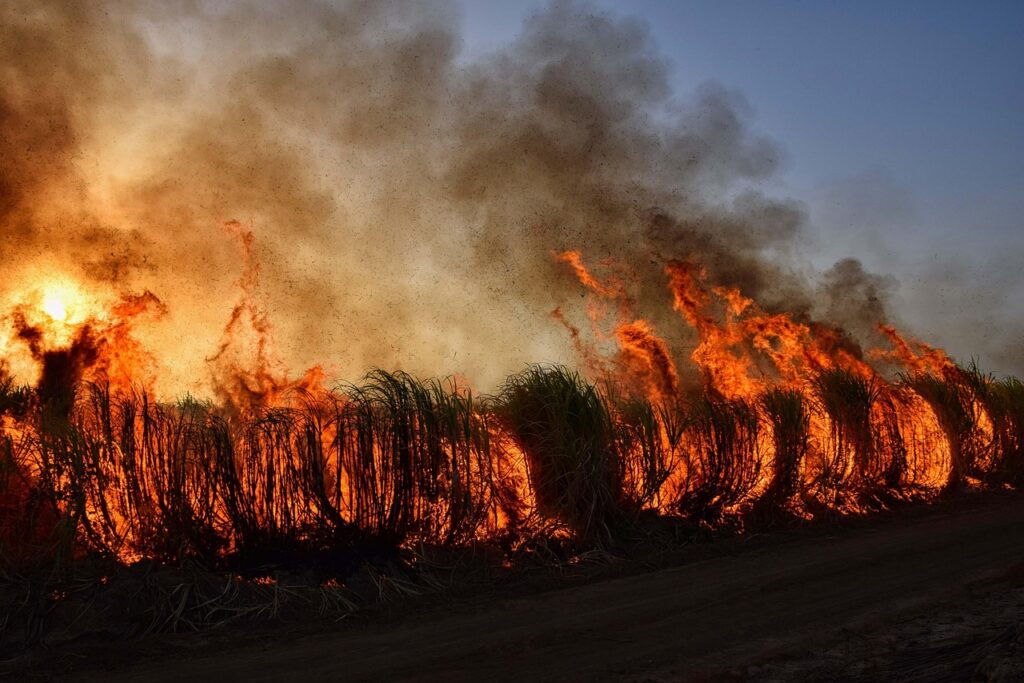The U.S. Department of Agriculture (USDA) has taken a major step in wildfire prevention by launching a $75 million public-private partnership (PPP) with Sierra Pacific Industries (SPI). This initiative will construct and maintain 400 miles of fuel breaks across federal and private land in California and Oregon. The project enhances community safety and forest resilience. USDA Secretary Brooke Rollins and Forest Service Chief Randy Moore announced this initiative. It expands the existing 2,200-mile fuel break network, a critical defense against wildfires.
The National Interagency Fire Center (NIFC) reported that the U.S. faced over 52,000 wildfires in 2024, burning 2.8 million acres. California alone saw 1.2 million acres destroyed, highlighting the need for strategic wildfire mitigation. By combining SPI’s forestry expertise and USDA Forest Service’s resources, fuel break development will accelerate, cutting completion time by 50% compared to conventional projects.
Strategic Fuel Breaks: A Proven Wildfire Defense
Fuel breaks are crucial for wildfire prevention as they slow fire spread and create safer areas for firefighters. These strategically placed barriers protect communities and infrastructure while reducing the likelihood of large-scale fires.
SPI will implement shaded fuel breaks, which preserve canopy cover while clearing flammable undergrowth. Research indicates shaded fuel breaks can reduce fire intensity by up to 60%, offering critical protection for high-risk regions. The USDA Forest Service PPPs and CAL FIRE collaborated to select project sites in the most wildfire-prone areas.
Expanding the fuel break network across California and Oregon will safeguard millions of residents, vital water infrastructure, and environmental zones. Studies show that 80% of homes destroyed by wildfires are due to embers traveling beyond fire perimeters. Strengthening wildfire resilience strategies ensures that suppression efforts are more effective and communities stay protected.
USDA Forest Service PPPs: A Model for Wildfire Resilience
Public-private partnerships (PPPs) have become essential for managing large-scale environmental challenges. By merging private sector efficiency with public oversight, PPPs provide faster project execution, cost-sharing, and improved resource allocation. In wildfire management, PPPs contribute to forest restoration, fuel reduction, and community preparedness programs.
The success of USDA Forest Service PPPs could serve as a model for other federal-state-private collaborations in climate resilience. The U.S. has seen a 24% rise in federal funding for wildfire prevention since 2020. PPP-led projects like this optimize impact by leveraging private expertise. Similar initiatives in Australia and Canada have reduced fire-related damages by 40%.
This partnership aligns with the Biden Administration’s Wildfire Crisis Strategy, which has allocated $1 billion over five years for wildfire mitigation. Integrating PPPs into these policies ensures prevention measures remain scalable, sustainable, and cost-effective.
Impact on Rural Development and Environmental Protection
Beyond fire prevention, this PPP supports rural economies by creating hundreds of forestry jobs. According to the California Forestry Association, the timber industry contributes $21 billion annually to the state economy. Responsible forest management through PPPs enhances both economic growth and environmental sustainability.
The agreement also includes post-fire restoration, ensuring affected landscapes are rehabilitated through reforestation projects. Healthy forests play a key role in carbon sequestration, absorbing 30% more carbon dioxide than fire-damaged areas.
State and community leaders have praised this initiative as a major step in wildfire resilience. By combining government action with private-sector innovation, this partnership creates a scalable model for long-term wildfire mitigation.
As climate change intensifies wildfire risks, expanding PPP-led wildfire prevention will be critical for protecting lives, property, and natural resources. The USDA-Sierra Pacific partnership is a strong move toward safeguarding forests and communities across the nation.
Source:





